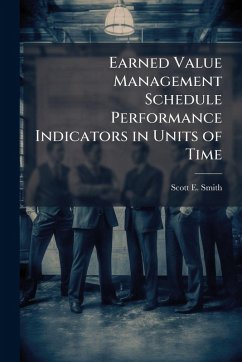
Predicting Cost and Schedule Growth for Military and Civil Space Systems
Versandkostenfrei!
Versandfertig in über 4 Wochen
17,99 €
inkl. MwSt.
Weitere Ausgaben:

PAYBACK Punkte
9 °P sammeln!
This research seeks to identify factors contributing to military and civil space system cost and schedule growth, quantify the relative impact of these factors, and establishing a set of models for predicting cost and schedule growth. The analysis consists of logistic and multiple regression to assess 21 Department of Defense and 71 National Aeronautics and Space Administration (NASA) space programs. The study finds that, for military spaces systems, communications missions, ground equipment, firm-fixed price contracts, and increased program manager tenure are all predictive of lower cost grow...
This research seeks to identify factors contributing to military and civil space system cost and schedule growth, quantify the relative impact of these factors, and establishing a set of models for predicting cost and schedule growth. The analysis consists of logistic and multiple regression to assess 21 Department of Defense and 71 National Aeronautics and Space Administration (NASA) space programs. The study finds that, for military spaces systems, communications missions, ground equipment, firm-fixed price contracts, and increased program manager tenure are all predictive of lower cost growth. For NASA space programs, the study finds that smaller programs (by total cost), more massive spacecraft, microgravity missions, and space physics missions are predictive of higher cost growth. For schedule growth of NASA programs, the study finds that larger programs and those developed by the Jet Propulsion Laboratory, Northrop Grumman, or international developers are predictive of increased schedule growth, whereas those programs developed by Johns Hopkins University are predictive of reduced schedule growth. This work has been selected by scholars as being culturally important, and is part of the knowledge base of civilization as we know it. This work was reproduced from the original artifact, and remains as true to the original work as possible. Therefore, you will see the original copyright references, library stamps (as most of these works have been housed in our most important libraries around the world), and other notations in the work. This work is in the public domain in the United States of America, and possibly other nations. Within the United States, you may freely copy and distribute this work, as no entity (individual or corporate) has a copyright on the body of the work. As a reproduction of a historical artifact, this work may contain missing or blurred pages, poor pictures, errant marks, etc. Scholars believe, and we concur, that this work is important enough to be preserved, reproduced, and made generally available to the public. We appreciate your support of the preservation process, and thank you for being an important part of keeping this knowledge alive and relevant.












